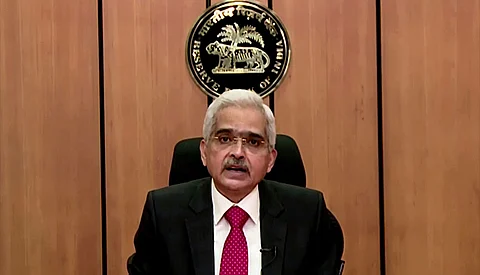
- Home
- About
- Globally Speaking
- Videos
- Podcast
- Geopolitics
- Industry
- SIGN UP

GST collections are showing a growth trend; auto, FMCG, consumer durables and steel demand is up; many companies are stepping up investments in anticipation of better times ahead.
India is at the cusp of an economic recovery after experiencing a record 23.9 per cent Covid-induced economic contraction in the first quarter (April-June) of the current financial year, Reserve Bank of India (RBI) Governor Shaktikanta Das said at a virtual event recently.
“I think once there is containment of the pandemic the government will certainly have to spell out a fiscal roadmap to adhere to the debt-to-GDP target that (the FRBM) committee have set out,” he said. India Global Business (IGB) takes a bird's eye view look at the some of the major proxies for economic activity to see where this revival is most evident.

Steady improvements in several economic indicators such as goods and services tax (GST) collections, GST e-way bill generation, power demand, railway freight earnings and exports all seem to bear out Das's prognosis for the Indian economy.
GST collections are, perhaps, the best measure of consumption demand in the economy as it is a consumption-based tax. There is light visible at the end of the tunnel if one looks at the GST mop-up over the last couple of months.
More to read:
For the second straight month in October, GST collections are likely to record a growth trend.
Looking at the “extremely healthy” tax buoyancy in the first half of the month, experts said GST collections in October are likely to cross $14 billion for first time in 2020-21 and touch the highest level recorded in eight months. The figure for the corresponding month last year was $13.1 billion.

"For the second straight month in October, GST collections are likely to record a growth trend. Going by the current numbers of monthly returns, GST collections recorded in October are likely to cross the Rs 1 lakh-crore ($14-billion) mark," various newspapers quoted a highly placed source in the government as saying.
This will mark a significant sequential rise over the September 2020 GST collection figure of a little more than $13 billion, which was a 4 per cent improvement over the figure last September.
Leading tax experts said the large increase in the number of returns filed and the clearly visible improvement in demand across sectors points to a nascent recovery in the Indian economy and indicates that things are gradually returning to normal.
There are other important indicators pointing to the same conclusion. The Business Resumption Index brought out by Nomura India is also signalling a recovery in business activity. For the week ended October 25, it clocked a post-lockdown high of 83.5 per cent, up significantly from the level of 81.9 per cent recorded in the earlier week.
Still more to read:
Both these numbers show a strong rebound from their September levels. The average figure for October was 82 per cent and was in keeping with the momentum achieved in the previous month.

The Japanese brokerage firm, however, added a word of caution, saying: “While the flattening of the pandemic curve is a growth tailwind, we remain cautious, as the upcoming festive season and Bihar elections could lead to a reversal.”
The overall revival in demand across various segments of the Indian economy is finding an echo in individual sectors as well.
Fast moving consumer goods (FMCG) majors such as Nestle, Hindustan Unilever, PepsiCo, Britannia and others are stepping up investments in India in anticipation of better days ahead.

Nestle, which is India's largest packaged foods company, has decided to invest $350 million over the next three to four years in fresh capacities as business has grown in double digits.
US food and beverages major PepsiCo and homegrown packaged food and milk products giant Britannia have also committed fresh or higher investments in their facilities in Uttar Pradesh, Tamil Nadu and Bihar.

Then, as reported in IGB last week, Indian steel companies are also seeing a bounce, thanks to increased demand for passenger vehicles, houses and white goods and a renewed government push for infrastructure projects.
Livemint.com, a leading financial daily quoted T.V. Narendran, Managing Director and CEO of Tata Steel, India's largest steel maker, as saying the company was operating at 100 per cent capacity for the first time since the lockdown. India's second-largest private sector steel company JSW Steel, controlled by billionaire Sajjan Jindal, recorded a 15 per cent rise in flat steel production while crude steel output was up 5 per cent year on year and 6 per cent sequentially.

Auto makers recorded double digit growth during the 10-day Navratri festival.
Auto makers such as Maruti Suzuki, India's largest passenger vehicle (PV) company, Hyundai Motor, the second largest PV maker and Mercedes Benz India, the country's largest luxury car maker, all recorded double-digit growth over last year's figures during the 10-day Navratri festival period.

In the consumer durables segment, a surge in sales of smart phones, TVs, washing machines, microwave ovens, air-conditioners and refrigerators is prompting companies such as Samsung, LG and Panasonic, among others, to increase production and stock up further in anticipation of sustained sales growth.
